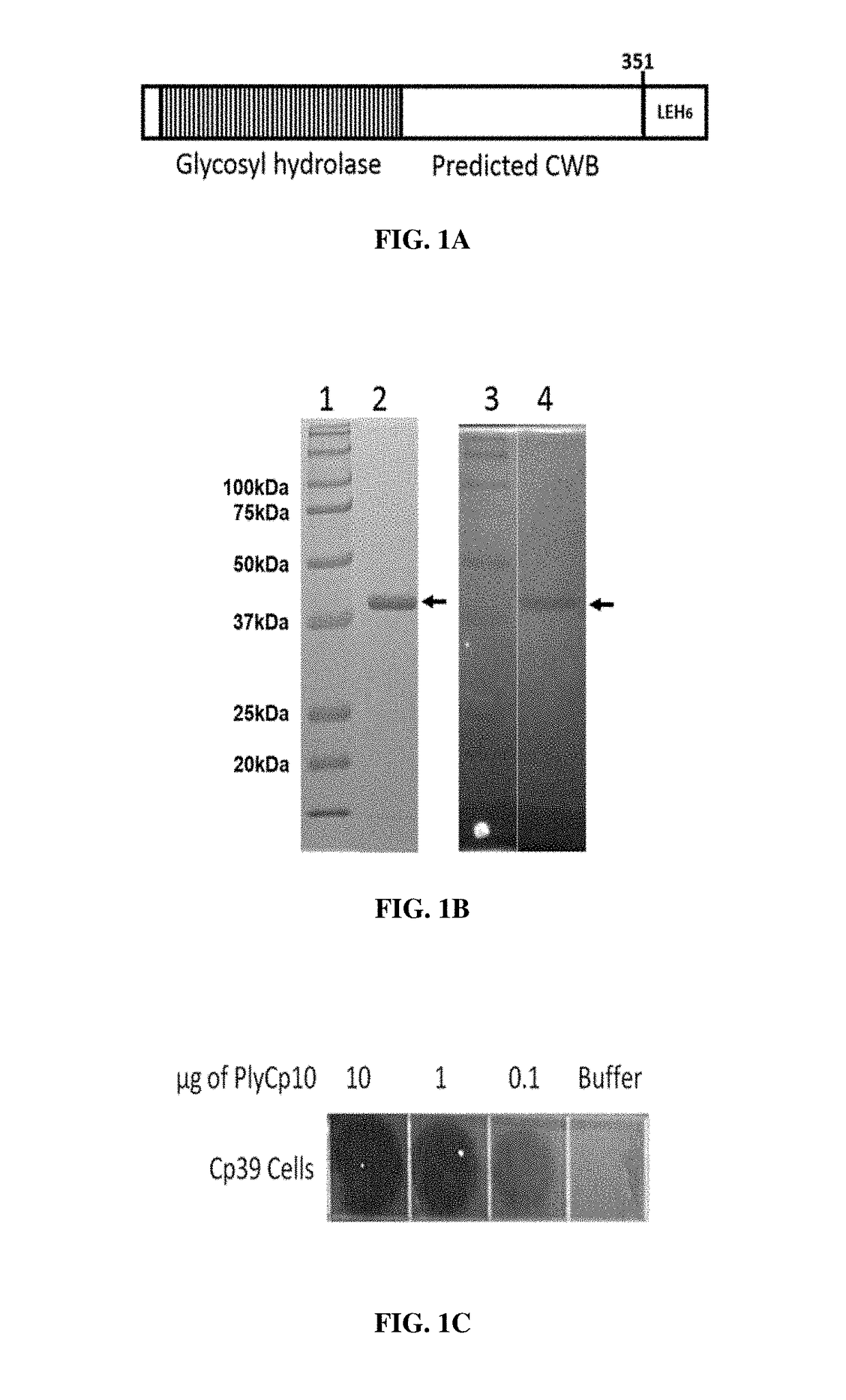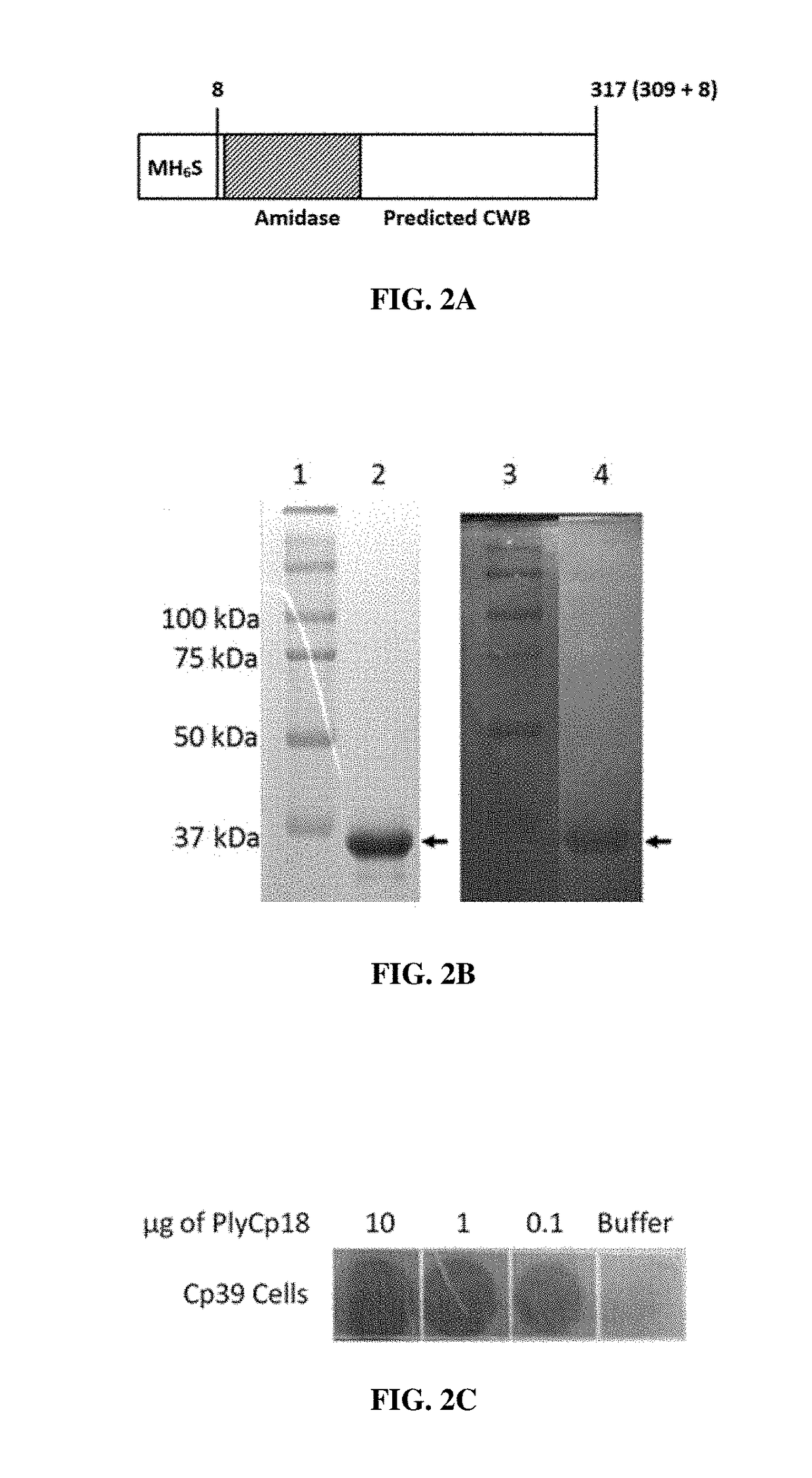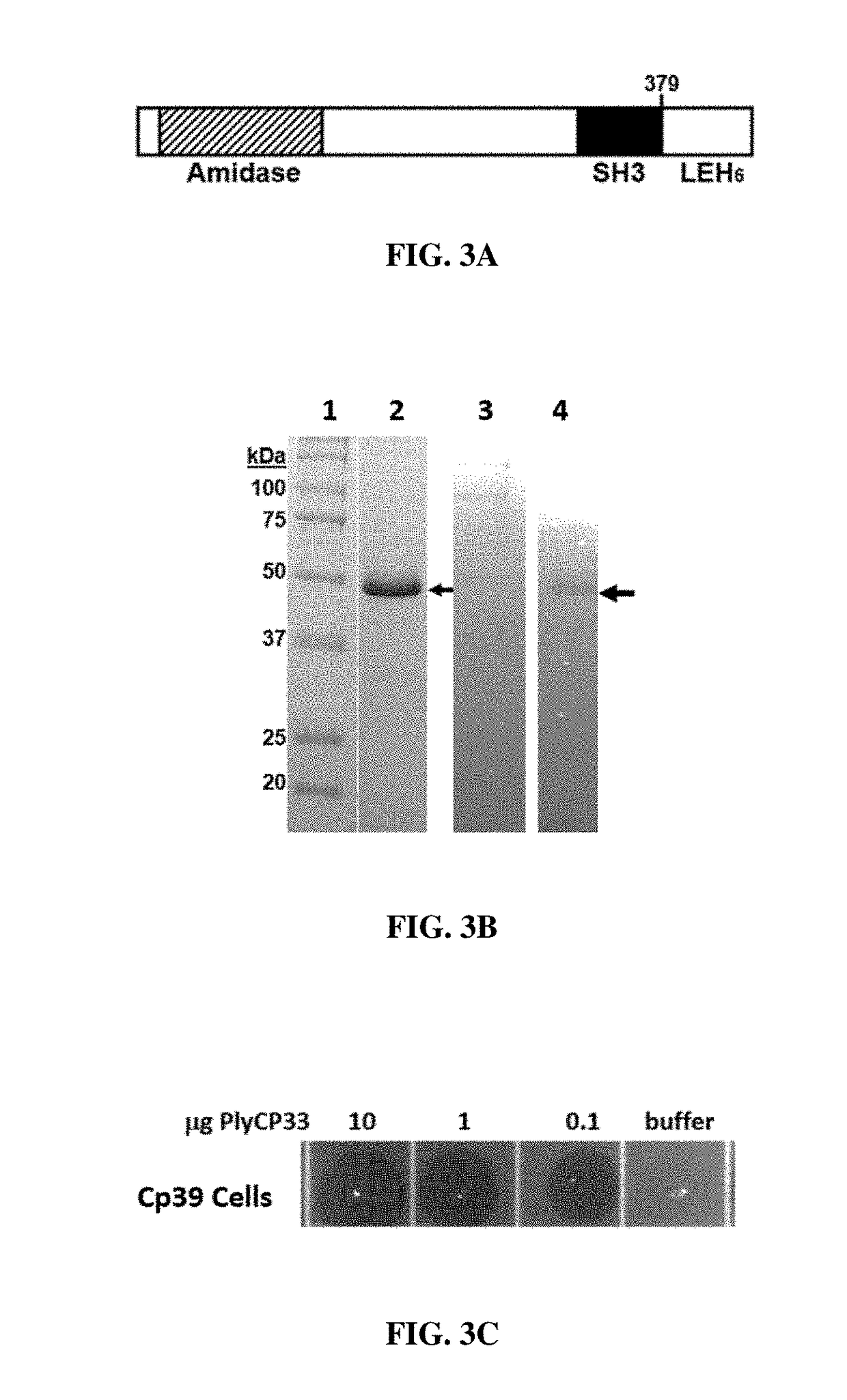Characterization of Four Prophage Endolysins Specific for Clostridium perfringens
- Summary
- Abstract
- Description
- Claims
- Application Information
AI Technical Summary
Benefits of technology
Problems solved by technology
Method used
Image
Examples
example 1
[0068]Bacterial Cultures, Propagation of Strains
[0069]All strains used in this work are listed in Table 1. Poultry C. perfringens strains Cp6 to Cp1038 were a gift from Bruce Seal (Poultry Microbiology Safety Research Unit, Agricultural Research Service, U.S. Department of Agriculture, Athens, Ga., USA), porcine C. perfringens strains JGS 1073, JGS 1090, JGS 1504, JGS 1508, JGS 1544, JGS 1564, JGS 1659, JGS 1756, and JGS 1905 were a gift from Nancy Cornick (Veterinary Microbiology and Preventive Medicine, Iowa State University, Ames, Iowa, USA), bovine C. perfringens strains M17-17498, M17-19288, M17-20950, M17-22227, M17-22698, WVDL-17, WVDL-23, and WVDL-24 were a gift from Nicole Aulik and Donald Sockett (Wisconsin Veterinary Diagnostic Laboratory), and strains ATCC-12916 and ATCC-13124 were from the American Type Culture Collection (Manassas, Va., USA). Enterococcus faecalis strain EF-17 was a gift from Paul Hyman (Biology & Toxicology Department, Ashland University, Ashland, Ohi...
example 2
[0075]Protein Expression, Purification and SDS-PAGE Analysis
[0076]The recombinant endolysin proteins were expressed and purified essentially as described previously (Abaev et al. 2013. Appl. Microbiol. Biotechnol. 97(8):3449-3456). Briefly, BL21 (DE3) E. coli (Invitrogen™) carrying endolysin expression plasmids, pET variants, were propagated in 1 L Luria Bertani (LB) broth supplemented with 150 μg / mL ampicillin at 37° C. (shaking at 225 rpm) until the OD600 reading was 0.4-0.6 (log phase growth). The broth culture was held on ice for 15 minutes and then treated with 1 mM isopropyl-β-D-1-thiogalactopyranoside (IPTG) for induction of the peptidoglycan hydrolase gene. The induced cells were then incubated with shaking 18 hours at 10° C. The culture was centrifuged for 30 min at 6000 rpm. The supernatant was removed, the pellet was suspended in protein purification buffer (50 mM NaH2PO4, 300 mM NaCl, 10 mM imidazole, 30% glycerol, pH 8.0) and the suspended cells were lysed by sonication...
example 3
[0082]The plate lysis (spot on lawn) assay was essentially as described previously (Becker et al., supra). C. perfringens cultures were propagated to mid-log phase (OD600=0.4-0.6) in 100 mL BYC media. Cells were harvested via centrifugation at 5,000 g for 30 min., resuspended in 2 mL PBS 25% glycerol and stored at −80° C. until needed. The frozen cell pellet was thawed on ice, and washed with 10 mL sterile H2O. The cells were then washed once with 0.5× lysin buffer A and then a final time with 10 mL 1× lysin buffer A (50 mM NH4OAc, 10 mM CaCl2, 1 mM DTT, pH 6.2) and pelleted again. The cells were suspended in 1.0 mL lysin buffer A. Twelve milliliters of melted 50° C. semisolid BYC agar (BYC media with 7 g agar per liter, autoclaved 20 min) were added to the cells and then the mixture was poured into a sterile square petri dish. This was allowed to sit 20 min at room temperature to solidify and then 10 μl of the Ni-chromatography purified endolysin was spotted o...
PUM
 Login to View More
Login to View More Abstract
Description
Claims
Application Information
 Login to View More
Login to View More - R&D
- Intellectual Property
- Life Sciences
- Materials
- Tech Scout
- Unparalleled Data Quality
- Higher Quality Content
- 60% Fewer Hallucinations
Browse by: Latest US Patents, China's latest patents, Technical Efficacy Thesaurus, Application Domain, Technology Topic, Popular Technical Reports.
© 2025 PatSnap. All rights reserved.Legal|Privacy policy|Modern Slavery Act Transparency Statement|Sitemap|About US| Contact US: help@patsnap.com



